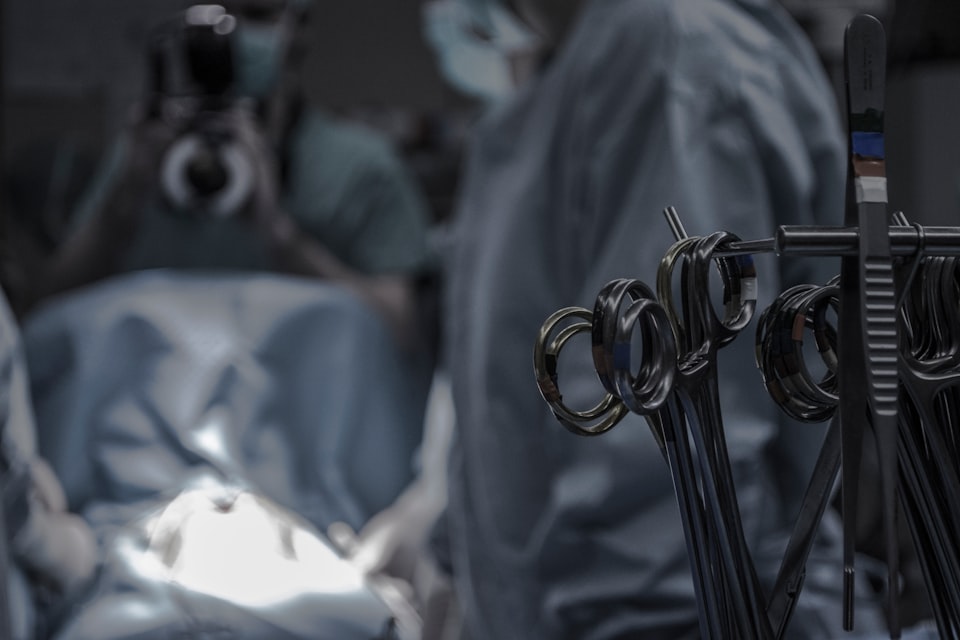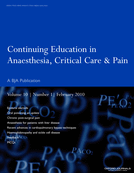Chronic Post Surgical Pain

Take home messages
- CPSP is hard to define, but causes patients a lot of trouble
- The key is working out who is at high risk of CPSP
- There isn't a lot of evidence for any intervention, but regional anaesthesia is a good idea where possible
Podcast episode
What is it?
Chronic post-surgical pain (CPSP) is one of the most common and serious complications after surgery, which is a pain (pun intended) because we don't really understand:
- What is is
- Why it happens
- How to prevent it
Which is disappointing.
Definition
- According to the 2019 ICD-11 criteria
- Pain develops or increases in intensity after surgery or a tissue injury
- Pain persists beyond the healing period, more than 3 months after event
- Pain is localised to area of injury or related to dermatome
Other causes of pain must be excluded.
So who gets it?
The average incidence of chronic pain after a surgical procedure at 6 months is between 20 and 30%, which sounds enormous.
The reality is the range is between 5 and 85%, and the huge variability is due to:
- Variability between different surgical procedures
- Different anaesthetic techniques
- Different definitions of what CPSP actually is
- Different methodological variables for each of the studies
The takeaway message is that it's more common than we probably appreciate.
Risk factors for CPSP
Patient Factors
- Smoking
- Lower eductation level
- Comorbidities
- Pre-existing disability
- Addiction
- Young adult
- Psychological factors - fear, depression, anxiety
- Obesity
- Unemployed
Anaesthetic Factors
- Opioid use
- Regional vs general anaesthesia
Procedural Factors
- Long surgery
- Repeat surgery
- Complications
- Specific procedures - e.g. Breast surgery, Hip and knee arthroplasty
What actually happens?
It's a strange process, involving both peripheral and central sensitisation, involving:
- Inflammatory and immune response to tissue damage
- Microglial activation
- Ectopic neural activity
- Altered dorsal horn activity and changes in descending pain modulation
Typical symptoms
- Hyperalgesia (increased pain felt to painful stimulus)
- Allodynia (pain felt to non-painful stimulus)
- Dysaesthesia (unpleasant tingling)
Can you predict who will get it?
Not really, but there does seem to be a fairly consistent link between the severity of postoperative pain in the acute setting, and who goes on to develop CPSP.
Three features of acute post operative pain are important:
- Severity
- Duration
- Whether it's improving or worsening
The quality of the pain is also important to elicit.
Visceral pain is more likely to predict CPSP than incisional pain.
Pre-existing pain
As you might expect, patients with pre-operative pain syndromes are more likely to develop CPSP, particularly if the pre-existing pain is in the area being operated on.
Are there any useful calculators?
Up until recently, the answer is not really, until Marjelle et al found that there are four strong predictors of who's likely to get CPSP in their study:

The four parameters
- Preoperative treatment with opioids
- Bone surgery
- Numerical rating scale pain score on postoperative day 14
- Presence of painful cold within the painful area 2 weeks after surgery
Painful cold within 14 days of surgery suggests central sensitisation with altered pain processing has occurred, and is a strong predictor of CPSP development.
So how can we prevent it?
In essence, lots of studies have been done, but give widely mixed results, probably as a result of the studies all being conducted in different ways with different cohorts of patients who inherently carry different risk profiles as you'd expect.
Things that we think really do help:
- Regional anaesthesia
We know that epidural analgesia reduces CPSP in thoracotomy patients, most likely because it reduces central sensitisation by preventing transmission of pain signals to the brain in the first place.
Things you can do as the anaesthetist that might help:
- Ketamine, particularly in patients already on lots of opioids
- Gabapentinoids such as pregabalin
- Intravenous lidocaine, although there's no concensus on dose or duration, which is rather important to know
- Dexmedetomidine might help but doesn't have any strong evidence
More than just drugs
Pain is such a complex phenomenon, and it's so personal depending on many individual and combined variables, that it's highly unlikely to be something that's fixable with injections and needles alone.
Surprise, surprise, a multidisciplinary team approach is advised, including:
- Psychological therapy
- Physical therapy
- Surgeon
- Anaesthetist
- Acute and chronic pain teams
- General Practitioner
So what should I take away from this?
Pain is complex.
Some people will develop chronic post surgical pain.
We don't really know why.
Give lots of pain relief, use regional when you can, and avoid lots of opioids where possible.
Kind of like all of anaesthesia really...
Useful Tweets and Resources
"The inclusion of CPSP in the ICD-11 is a major step forward that will allow future studies to report the incidence of CPSP more accurately"
— British Journal of Anaesthesia (@BJAJournals) May 17, 2022
Chronic post-surgical pain in #BJAEducation #PainMedicinehttps://t.co/KTGzNLsw9m pic.twitter.com/WUgZMpmSfT
Chronic post surgical pain worse for patients on enhanced recovery programme- interesting poster @PRUOxford @JonRoom #BPSASM2018 pic.twitter.com/GT2jIwzhe6
— Leila Heelas (@heelas_leila) May 1, 2018
References and Further Reading



Primary FRCA Toolkit
While this subject is largely the remit of the Final FRCA examination, up to 20% of the exam can cover Primary material, so don't get caught out!
Members receive 60% discount off the FRCA Primary Toolkit. If you have previously purchased a toolkit at full price, please email anaestheasier@gmail.com for a retrospective discount.

Discount is applied as 6 months free membership - please don't hesitate to email Anaestheasier@gmail.com if you have any questions!

